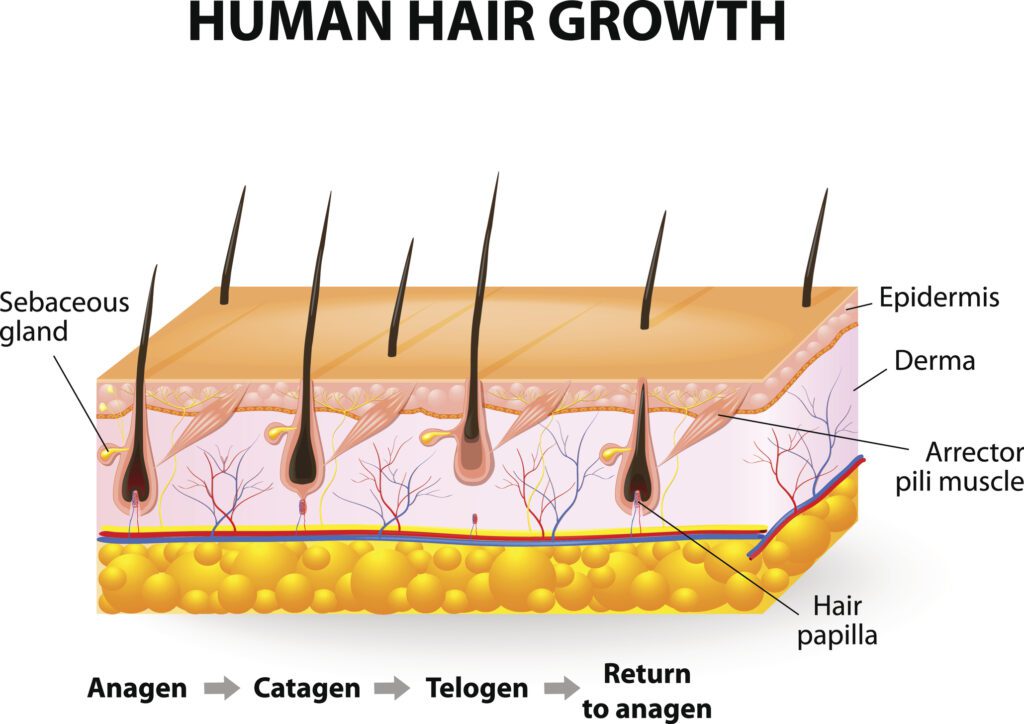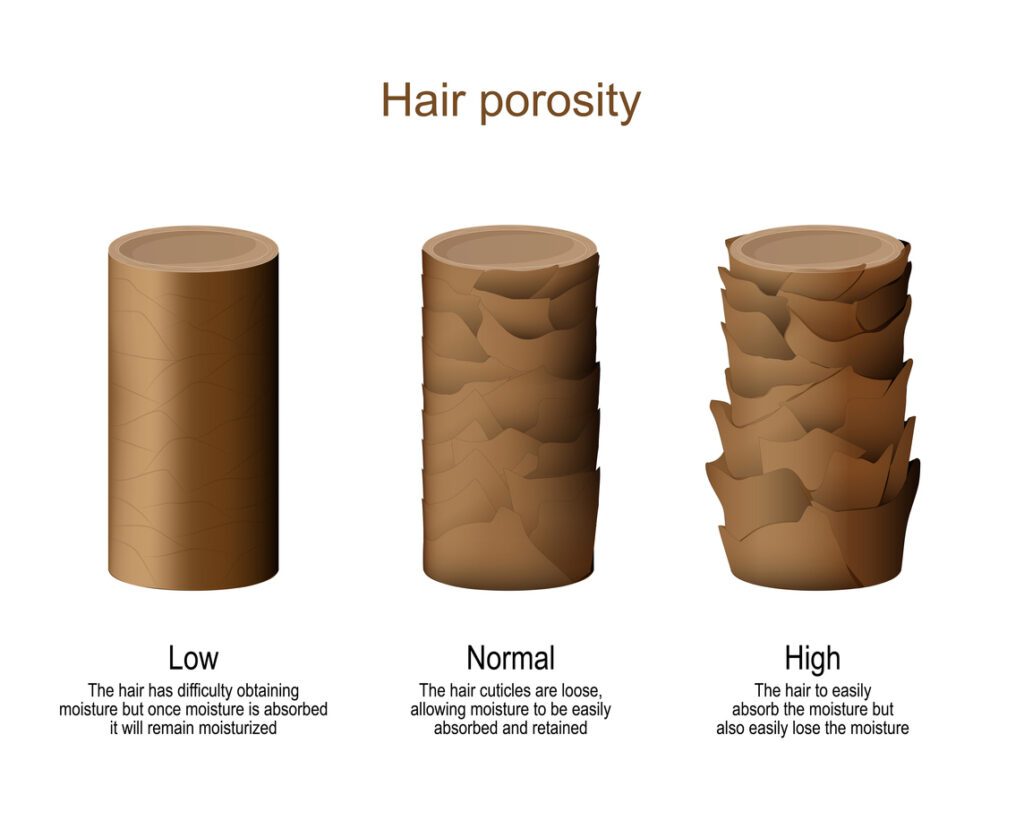

Have you ever gazed at someone else’s long, luscious curls and wondered if your curly locks could ever reach such lengths? The desire for a cascading, healthy, and envy-inducing mane is a common dream among many with curly hair. The good news is that achieving and retaining length for curly hair is not a far-fetched fantasy; it’s a tangible reality waiting to happen. Attaining and maintaining length on curly hair is an endeavor that amalgamates hair type understanding, consistent practices, and a dedication to nurturing hair health and overall well-being. Achieving beautiful, long curls is a result of combining what you know with what you do in a balanced way.
Embrace your unique hair texture, understand your hair’s needs, and embark on a tailored routine to unlock the secrets to healthy, long, and captivating curls.
The Science of Hair Growth
Before discovering the strategies for retaining length, it’s vital to comprehend the underlying science governing hair growth. Several critical factors contribute to the process, including genetics, hair growth rate, the duration of the anagen growth phase, and the quality of hair care.

Genetics:
Genetic makeup plays a pivotal role in determining the inherent potential of your hair length. If you come from a lineage of individuals with long locks, your chances of achieving significant length are more favorable than those without.
Hair Growth Rate:
The rate at which hair grows differs from person to person, influenced by genetics, dietary choices, and hormonal influences. On average, hair grows approximately half an inch each month.
Anagen Growth Phase:
The anagen phase is the active growth period of hair follicles, spanning around 2 to 7 years. Extending the duration of this phase is essential for maximizing hair length.
Hair Retention:
The prevention of damage and breakage is pivotal in the journey of retaining length. Fragile ends and excessive breakage can hinder achieving the desired length.
Balanced Diet and Supplements:
A balanced diet rich in essential nutrients is the foundation for healthy hair. Nutrients like vitamins A, C, and E, and proteins are vital for hair growth and strength. When your body receives these nutrients in adequate amounts, your hair is less likely to become brittle, thin, or prone to breakage.
Supplements like biotin, a B vitamin, can help prevent hair loss and promote growth. Biotin supports the production of keratin, a protein that forms the foundation of hair strands.
Understanding Hair Types and Their Role
The first step towards designing an effective length retention strategy is comprehending your hair type. Hair types are delineated based on porosity, density, volume, and texture criteria.
Porosity:
The porosity of your hair, a key determinant of its ability to absorb and hold moisture, plays a pivotal role in retaining length and maintaining healthy curls. This characteristic guides your choice of products and routines. If your hair has low porosity, it tends to be more resistant to moisture absorption, urging you to opt for water-based leave-in conditioners and deep moisturizing treatments to keep it adequately hydrated.

For those with medium porosity hair, the cuticles are slightly more receptive to moisture, allowing for the incorporation of both moisturizing deep conditioners and periodic protein treatments to strike an essential balance. On the other hand, high porosity hair often indicates damage or naturally open cuticles, leading to swift moisture loss. To counter moisture loss, protein-rich conditioners come to the rescue, aiding in reducing porosity. To lock in that essential moisture, sealing with nourishing creams or butters can prove remarkably effective, ensuring your curly tresses stay hydrated and your length retention journey stays on track.
Density:
The density of your hair, which refers to the number of hair strands per square inch on your scalp, significantly impacts your hair care strategy. It’s essential to recognize that fine, medium, and thick hair types have distinct care prerequisites for effective length retention. Delicate hair benefits from less frequent trims to safeguard growth, and it flourishes when treated with protein-enriched moisturizers that bolster its structural integrity and shield against breakage. Medium hair, striking a balance between delicate and thick, necessitates a consistent care regimen to uphold its resilience and avert breakage. As for thick hair, renowned for its robust nature, regular trims are essential to fend off split ends and ensure overall well-being.
Volume:
Hair volume results from a delicate interplay between the density of hair strands on your scalp and the width of each strand. This factor wields a substantial impact on your hair’s overall appearance and feel. Low volume is often indicative of low hair density, and in such cases, it becomes imperative to not over-hydrate the hair (as this can lead to limp hair). Conversely, hair with medium volume typically corresponds to a medium density, needing effective moisture management to ensure it remains in optimal condition. On the other end of the spectrum, high volume is usually synonymous with high hair density. Incorporating moisturizing protein treatments into their routine can be highly beneficial for individuals with high-volume, high-porosity hair. These treatments can effectively curb porosity and frizz, helping to maintain hair health and manageability.

Here are our ten tips for length retention:
- Finger Detangle: Employ gentle detangling techniques to minimize breakage.
- Sectional Washing: Cleanse hair in segments to ensure thorough cleansing while minimizing tangles.
- Regular Trims: Getting trims prevents further breakage as split ends continue splitting up the hair shaft.
- Pre-Poo Treatments: Pre-pooing preserves natural oils and reduces the harsh impact of shampooing.
- Incorporate Protein Treatments: Integrating protein treatments into your routine will boost hair strength and prevent breakage.
- Seal Moisture: Regularly seal in moisture to maintain hydration and prevent dryness.
- Limit Heat Styling: Mitigate hair damage by reducing the use of heat-styling tools.
- Nighttime Protection: Shield hair during sleep with silk or satin bonnets or pillowcases to curtail friction.
- Practice Low Manipulation and Protective Styling: Minimize manipulation and opt for protective hairstyles to reduce stress on hair strands.
- Mindful Product Selection: Opt for hair care products specifically formulated for curls, which are typically sulfate and alcohol-free.

Don’t do these:
- Comb Dry Hair: Prevent breakage by refraining from combing dry hair.
- Avoid Tugging and Pulling: Don’t tug at or pull any knots as this will lead to breakage at the knot.
- Brush Through Length: Limit brushing to detangling with conditioner-soaked hair to minimize breakage.
- Prolong Protective Styles: Avoid leaving protective styles in for extended periods, which can impede hair growth.
- Avoid Cotton Towel Drying: The rough texture of towels creates friction, leading to breakage, split ends, and excess frizz.
- Resist Chemical Treatments: Steer clear of relaxers, perms, and harsh chemicals that compromise hair integrity.
- Tight Hairstyles: Repeatedly wearing tight buns, ponytails, or braids can cause tension, alopecia, and hair thinning.
Helpful video:
Take our Hair Quiz to figure out your hair characteristics.
And try our 2 week Trial Membership!






